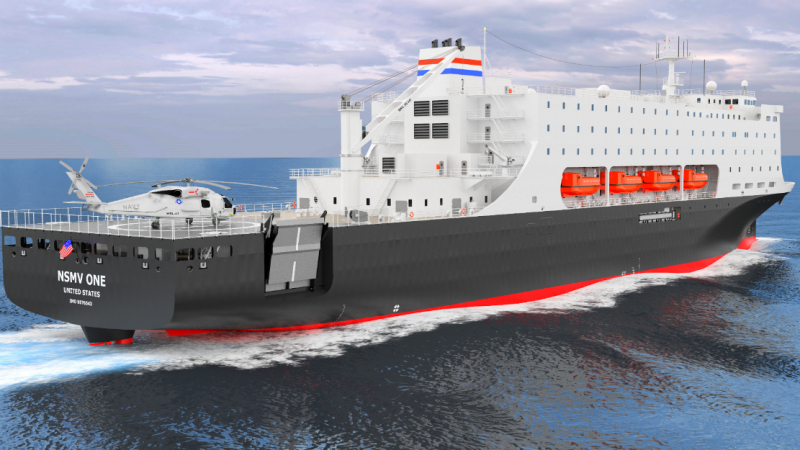10 ways the U.S. military can make use of the new National Security Multi-Mission Vessel (NSMV)

In a major coup as it relates to U.S. Govt. spending; a contract has been approved to supply five of these brand-new training ships. One is slated to be delivered each year, starting in 2023. Each one will be owned by the U.S. Maritime Administration and operated by one of the state-run Maritime Academies. These vessels have been given the primary mission of serving as training vessels for new merchant marine officers. They have also been tasked with performing humanitarian and disaster relief missions when required.
National Security Multi-Mission Vessel - Wikipedia
At the same time, it is no secret that the U.S. Navy is struggling to meet and fund both its current and future ship requirements. What other missions might the NSMV be able to undertake for either the U.S. Navy or the civilian operated Military Sealift Command? I will give some of my ideas, but I welcome others to add theirs in the comments below. If it looks like many responses are rolling in; I may repost as a challenge.
1. Troop Ship
2. Hospital Ship
3. Command Ship
4. Forward Expedition Base for amphibious operations
While the NSMV is not capable of beaching itself, it is relatively shallow draft, can dock and maneuver without the need for tugs, and her crane or ramp needs only a suitable deck or quay for loading and unloading. Lightering operations would also be possible, using her own crane.
5. POW / Refugee / Non-Combatant Evacuation Ship
6. Missile Truck
In simple terms, the pictured flight deck is also fitted to carry standard cargo containers. Self-contained containerized missile systems are a common weapon today. One thought is that in a future conflict you could have many dispersed vessels, each launching their missiles in coordinated strikes or overwhelming salvos. Once airborne, the missiles would be guided by either internal systems or by a command vessel.
7. Special Operations mother ship
This has been done before, but a vessel that resembles a regular commercial ship can pass more easily through vessel traffic lanes than any naval vessel. And even though the NSMV as it sits today has a fairly distinct outline, IMO it does not appear to be a any sort of military vessel.
8. Seabasing
Similar to, but a further extension of the forward base using different ship types in conjunction:

9. Single hull form economies
Is this high efficiency medium speed hull form sufficiently adaptable that naval architects could design or re-design several different types of vessels, all using the same hull shape and dynamics? Keep the hull and redo the superstructure? I don't know, but it should be worth investigating.
10. R&R
While not the same as a few days away in some far-off port of call, the NSMV could serve as an in-theatre rest and recuperation center for those needing a break and time to recharge. With lots of open space, berthing, cinema spaces, gymnasium, dining facilities, and a medical staff, it would provide a secure, mobile, friendly, and familiar environment to decompress until it is time to man your post once again.
11. The ships are being produced. Let's put them and more like them to work.
Each training ship spends the majority of their time docked at their respective home Academy. And while vital training does take place on-board during these times, the vessels are basically laid up. With more missions, the ships could be kept in a higher state of readiness, which while somewhat more expensive, leads to more training, more seagoing jobs, and the freeing up of other,, more expensive combat vessels for these types of support missions.
12. The production line is running now.
In essence, the initial start-up costs and logistics have been done. The ships in various stages of production, with one scheduled to slide down the ways each year for the next 5. But what if the Navy decided there were other uses for this versatile vessel. Perhaps that production line would continue running for 7 to 10 years. Perhaps even longer. And with economies of scale, each vessel produced is a little cheaper than the one that came before. Also, as these ships enter service, and crews start gaining first-hand experience, it is inevitable that upgrades and new uses will be discovered.

No comments.